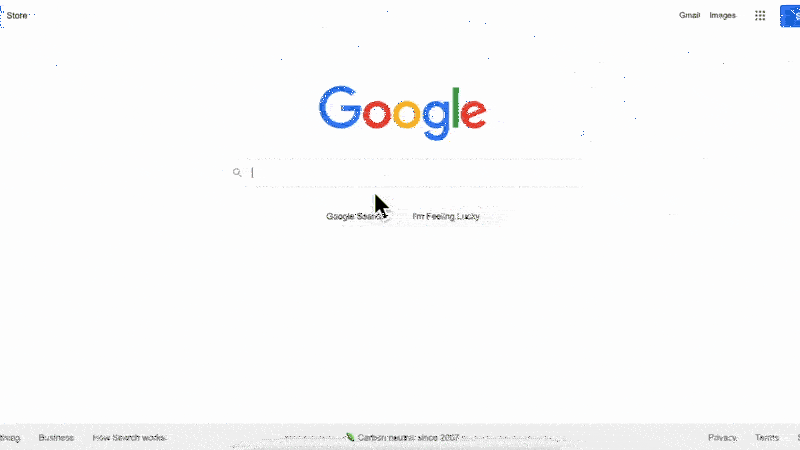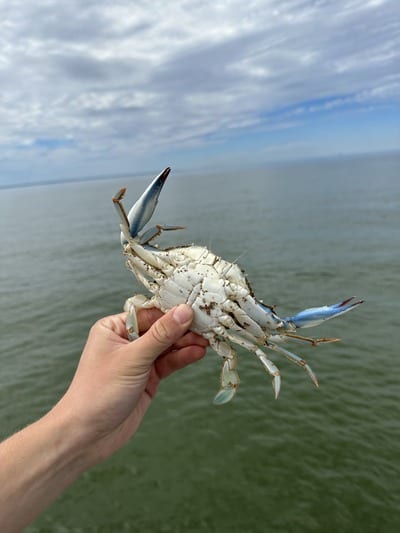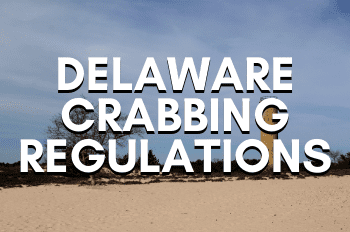Texas Blue Crab Laws (In Plain English)
In my time writing crabbing guides for nearly every coastal state in the United States, I’ve always wondered why government websites make their crabbing regulations so confusing. I want all my readers to be untouchable by the game warden, so I made this clear and straightforward summarization of Texas crabbing regulations.
This information is presented as a brief synopsis of the law and not as legal advice. Crabbinghub is not, and cannot be, a legal service provider. It is the angler’s responsibility to be up to date with their state’s fishing & crabbing regulations.
Table of Contents
Updated May 16th, 2022. See Disclaimer.
A Quick Summary: General Blue Crab Regulations
| Minimum Crab Length | 5 Inches |
| Daily Posession Limits | No Limit |
| Season | No set season |
| Required License | A valid Fishing License & Saltwater Fishing Endorsement |
| Gender | Male & Female allowed (Females discouraged). Females with an open abdomen and/or egg-bearing are not allowed. |
You can catch blue crabs in Texas year-round that measure over 5 inches or more along its carapace. You can keep male and female crabs, just as long as the female is not bearing any eggs under her abdomen. You will need a valid fishing license and a saltwater fishing endorsement to crab in Texas public waters and operate any crab traps, hand lines, collapsible traps, and other crabbing methods.

Licensing
“A person taking or attempting to take crabs or ghost shrimp from salt water for non-commercial purposes is required to have a valid fishing license and a saltwater fishing endorsement” (TDWP).
To make things clear and simple, the State of Texas requires us recreational crabbers to have a fishing license and a saltwater endorsement to catch blue crabs. You purchase these licenses on the TPWD (Texas Parks & Wildlife) website.
However, there are several options to choose from, so it may get confusing. Their website offers three variations of freshwater & saltwater licenses: resident, senior, and non-resident. Because we’re after blue crabs, we’re going to focus on the saltwater licenses.
Along with a fishing license, the state requires you to purchase a saltwater endorsement to catch blue crabs. As of May 2022, you can purchase this on its own for $10.00 with this link (TPWD website). You would only do this if you already had a freshwater license or only a saltwater license, otherwise you would go for the Saltwater Package.
If this is your first time getting a fishing license in Texas, go with the Saltwater Package options. This includes a saltwater fishing license and a saltwater endorsement. This checks the boxes of crabbing requirements: A valid fishing license and a Saltwater Fishing Endorsement.
To be as clear as possible, you need to purchase one the TPWD’s Saltwater Package to legally go crabbing in Texas. It includes the required fishing license and saltwater fishing endorsement. Click this link or view the GIF below for instructions on where to purchase this package.

Licensing Q&A
Q: If I’m crabbing in brackish water, will I need a saltwater or a freshwater fishing license?
A: Because blue crabs are found exclusively in saltwater, rather than freshwater, you will need a saltwater fishing license to catch blue crabs in salt and brackish waters.
Q: What are the age specifications for a Texas Fishing License?
A: A person younger than 17 years old is NOT required to have a valid Saltwater Fishing License and Saltwater Fishing Endorsement when catching blue crabs.
Q: Do I need a fishing license to catch blue crabs in a state park?
A: Sea Rim State Park’s Super Intendent Nathan Londenberg says in an interview with Channel 12 News, “The exception to that (needing a fishing license) is in a Texas state park with a valid entrance permit, you do not need a fishing license” (Source). It should be clearly stated that this ONLY applies to state park waters.
Crabbing Season
Like most southern states, Texas does not have a set crabbing season.
You can go crabbing year-round in Texas. However, for 10 days out of the month of February, “It is unlawful to place, fish or leave a crab trap or crab trap component in the coastal waters of the state” during the Annual Texas Abandoned Crab Trap Removal Program. Keep in mind that this only prohibits crab traps, but not the chicken and string and other manual crabbing techniques.
Refer to my article: How Crab Pots Work (With Pictures!) for clarification on what a crab trap is. We call them crab pots up north.
This event is led by the Texas Department of Parks & Wildlife in order to protect the blue crab population from being trapped in abandoned crab traps. The exact date of this event changed every year, so refer to TPWD’s website for the exact date.
Your next question may be, “When is the best time to go crabbing in Texas?”
According to Texas crabbing veterans, the best time to go crabbing in the state is when the average water temperature is above 70 degrees Fahrenheit. On average, the water temperature hits 70 degrees in Mid-March and drops below in Mid-November.
You can still go crabbing in the colder months, it will just be slower. You will not catch as many crabs using hands-on techniques such as hand lines and collapsible traps. Instead, try using crab traps (or crab pots as we say in Maryland) and let them soak for a longer period of time. Refer to my article: How Often Should You Check Your Crab Traps? for more information.
Crabbing Gear Regulations
Now that you know what crabs you can keep, have the required licenses, and know when you can catch crabs, it’s time to go over the legal crabbing gear in Texas.
These regulations come from the Texas TPWD Website as of 5/19/22. For the most accurate, up-to-date information, visit https://tpwd.texas.gov/regulations/.
Crab Trap (Crab Pot)
The crab trap, or as we Marylanders like to say the crab pot, is the most regulated crab-catching device in Texas. For clarification on what we’re talking about, read my article: How do Crab Pots Work (With Pictures!) to see real pictures of my old crab trap. Let’s go over what you need to know in order to avoid any fines.
| Crab Trap Requirements |
| Each trap must have a valid gear tag located within 6 inches of the crab trap’s marked buoy. This tag must be legible and include the name and address of the person using the trap and the date it was set out. |
| The crab trap must be marked with a white buoy, measuring at least 6 inches in length, 6 inches in width, and 6 inches in height. The buoy must have a 2-inch-wide line in a contrasting color (I recommend red) along the circumference of the buoy’s middle. The float cannot be made out of a plastic bottle or jug. |
| A crab trap cannot exceed 18 cubic feet and must include two escape rings (also known as cull rings) for pre-mature crabs to escape. Escape rings must be 2 and 3/8 inches in diameter. The trap must also be equipped with a degradable panel. |

I found this white buoy on Amazon for a very cheap price. It’s 7.5 inches in height, length, and width and has a marked line for you to pain whatever contrasting color you can think of. I recommend you use red. Click here to see it on Amazon.com or the image above.
Location-based regulations with crab traps are ever-changing, so it does not make sense for me to write about it here. Check TPWD’s post on gear regulations for crab traps.
Q: How many crab traps can I use in Texas?
A: Only 6 crab traps can be used at a time in the state of Texas for non-commercial purposes. This includes any recreationally-licensed individuals catching Blue Crabs. These traps can only be pulled in from the water during the period 30 minutes before sunrise to 30 minutes after sunset.
Crab Line
Crab lines, also known as hand lines, are a popular crabbing method in Texas. This method uses a piece of bait (usually chicken with a bone), a dip net, and a string. The method is simple: tie the bait to the end of your string and throw it in the water to lure crabs, then scoop them up with the dip net. This is an oversimplification, to read an in-depth guide, read my article: Crabbing with Hand Lines: The Quick & Easy Guide.
Crab lines have no regulations in Texas. This means you can use as many as you want at all times during the year, even during the 10-day period prohibiting crab traps in February. However, this method will be less effective in the winter months or when the water is below 70 degrees. Use this method From April to October when the water is warmer and crabs are more active.

I use these low-priced, well-made hand-lines from Amazon. They come with a weighted bait clip at the end, so you don’t need to worry about your bait floating away in the current. You can also get away with using chicken that does not have a bone in it. Click here to see this product on Amazon.com.
Folding Panel Trap (Collapsible Trap)
A folding panel trap, also known as collapsible traps, can be either box traps, ring nets, or pyramid traps. If you are a regular reader of Crabbinghub, you know that I recommend the Foxymate Box Trap (Click here to read my review). This is a more manual way of crabbing compared to crab pots, but they work very well when crabbing from piers. If you do not have a pier to crab from, use a crab line or crab pot instead.
The only regulations on Folding Panel Traps are that they cannot exceed 16 square feet and you can only catch crabs with them. Anything else that might be caught in the trap must be released.
This information is presented as a brief synopsis of the law and not as legal advice. Crabbinghub is not, and cannot be, a legal service provider. It is the angler’s responsibility to be up to date with their state’s fishing & crabbing regulations.



